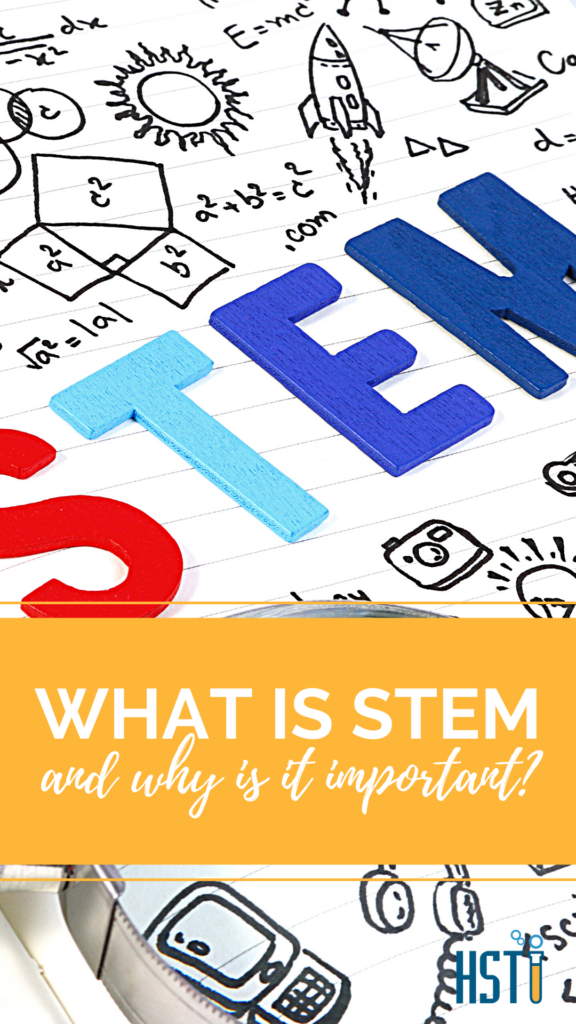By now, you’ve heard of the term STEM. But beyond the acronym, what’s it all about? Is STEM just another fad? Or are STEM fields the key that can unlock the future for not only young people but for the world?
Let’s dive in.
Our shrinking + expanding world
Ever feel like the world is simultaneously getting bigger and smaller? Sounds contradictory but stay with me.
Technological discovery, advancement, and have been steadily growing at an astounding rate. At the same time, the information age has made the world feel smaller, right? Just think about it for a moment — the internet, cell phones, video calling, online classes, etc. bring most of the world to our fingertips.
With seemingly limitless information—and literally billions of people—accessible online, for the first time in history, students of today join a global workforce upon graduation. What does this mean? It means that competition is no longer just the local kid down the street. Competition is now the kid down the street, the one in the next state over, and the one living in the country on the other side of the world.
Today, the workplace is vastly more high-tech than a few generations ago. Technical and scientific literacy are more vital than ever in the 21st century and will only become more so with each passing year and for the next generation.
What is STEM?
STEM stands for SCIENCE, TECHNOLOGY, ENGINEERING, and MATHEMATICS. STEM-focused learning creates critical thinking and boosts science literacy. How did the concept of STEM come about? STEM became popular as a means to close the gap between graduates and high-tech jobs.
But it is so much more than that!
- It’s discovery-based learning/teaching in a customized learning environment vs just informational dumping. It’s practical application vs just memorizing facts.
- It focuses on a student’s interests and learning styles is a key component to incorporating it into their education.
- It’s an engaging and exciting approach to education.
- And, it’s essential to a well-rounded education, and consequently better prepares individuals for the workforce.
STEM: Bridging The Gap
There is a push to incorporate STEM into education to help bridge a huge gap. Workers are arriving at the workforce with textbook knowledge but no hands-on experience and no real understanding of their field.
That’s a huge problem.
The goal of STEM is to increase discovery learning, efficiency, and accuracy among all ages, especially high school students — thus creating better workers for the future of the real-world workforce, including everyone from factory workers, to hospital technicians, engineers, medical doctors, and researchers.
Where Does Home Science Tools Fit In?
Home Science Tools believes we can make the world a better place through a greater understanding and application of science. We do this by making science discovery and education fun and accessible for kids and adults. We provide classic and cutting-edge products that implement hands-on learning, exposure to technology, integration between math and science with engineering and technology, and practical problem-solving. Our products help to foster, develop, and improve STEM literacy, plus promote an interest in STEM careers.
Home Science Tools offers the lab supplies necessary to provide a rigorous science education at home. For parents who are concerned that public school STEM instruction may be lacking, HST provides a wealth of materials for supplementing studies at home. For kids and adults interested in exploring science, technology, engineering, and math, we offer a virtual wonderland of opportunity!
Why a STEM Education Matters
STEM learning is important for scientific researchers, medical doctors, engineers, technicians, mathematicians, computer scientists and programmers, software designers, biologists, chemists, and many others. Some careers that are typically dismissed as “simple manual labor” are actually important STEM careers.
Let’s look at metal fabrication (welding, sheet metalworking, machining, etc.).
- requires a solid understanding of math and problem-solving
- a sheet metal worker needs to be able to calculate the angle to bend a sheet of steel, to account for the springiness of the material, and achieve the desired shape. Geometry and physics are both needed for this.
- custom jobs require workers to be able to come up with creative solutions to get the job done without wasting materials and time — which requires the ability to solve problems.
Metal fabrication is just one example of a career that isn’t science or engineering that requires extensive STEM literacy. There are countless others.
We live in a world that is dependent upon and influenced by technology. Having a basic understanding and appreciation of this technology is important for STEM and non-STEM career holders alike. A strong foundation in teaching STEM subjects can help to lay the groundwork for your child who is interested in pursuing higher education in a stem program
Find some great STEM activities and resources here that you as your child’s educator can begin to incorporate into your students’ learning today!






